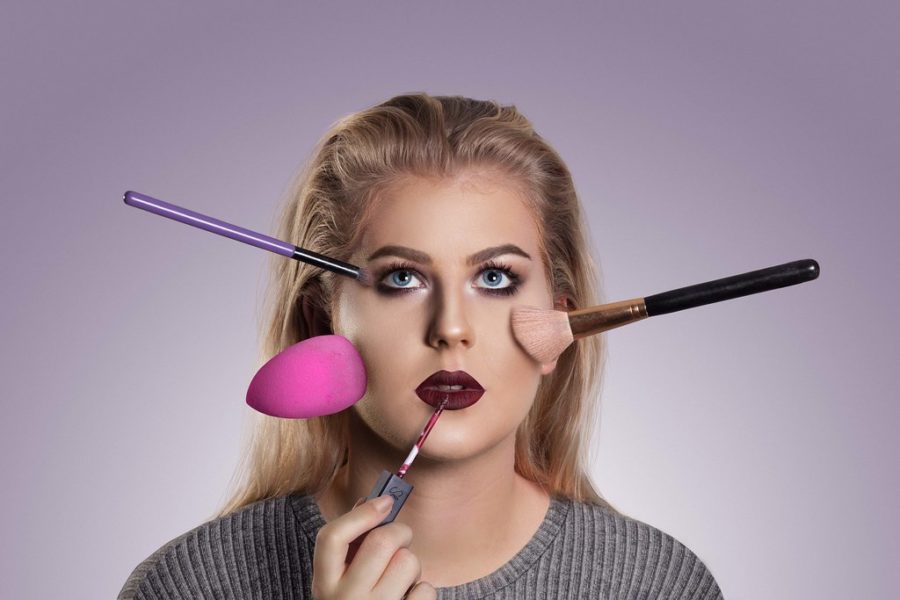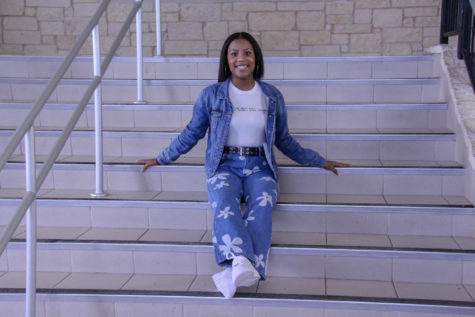What is Beautiful is Also Good: The psychology behind the Halo Effect
Why do we as humans prioritize and deify all that is beautiful while we demonize all that is not ?
Exemplar of how society tries to fit into beauty standards.
May 16, 2022
From young, mankind is bombarded with images of physical beauty. Society seems to force a narrative that beauty is an elite inspiration that only some are fortunate enough to achieve, and attaining physical beauty is a door marked exit for a life of disappointment and despair.
But why do we as a society unconsciously gravitate towards beauty? Considering the fact that we live in a world that discourages special treatment and oppression, how do we as a society manage to subconsciously favor physical beauty even if the individual doesn’t have the credentials or morality to receive favoritism or special privileges.
This is can be justified by the concept called the Halo Effect.
The Halo effect is described as a cognitive bias that indicates that one assumes all desirable qualities that a person can possibly have if they are traditionally attractive. On the contrary, if a person is not traditionally attractive, they receive negative treatment or dehumanization due to the false assumption that they attain no desirable inner-qualities.
“A common phrase instructs people to ‘not judge a book by its cover’ – but that’s what we do. We’ll often take one look at a book and judge not only whether its contents are worth reading, but whether we’ll even bother perusing the jacket. While this may seem a trivial feature of our reading tastes, it extends to how we treat our fellow humans too,” Delaney Mars said.
Now that the meaning of the Halo Effect is identified, what is the history behind the Halo Effect, and how is it culturally defined as of today?
In 1915, influential psychologist, Edward Thorndike, conducted a study that is now referenced as “A Constant Error in Psychological Ratings.” In this study Thorndike visited military officers and asked them to evaluate their qualities. Through the responses Thorndike concluded that a high rating of one particular unrelated quality often influenced abnormally high ratings of other qualities.
Therefore, Thorndike’s discovery lead to the belief that particular qualities, typically based on physical appearance, resulted in disproportionate high rating of the presence of favorable inner qualities.
In recent years the subject of the Halo Effect started to be modified into what it is now known as Pretty Privilege, which is the idea that traditionally attractive people often receive extra privileges, opportunities, and positive character assumptions in spite of their personality, credentials, or morality.
The newly defined concept of Pretty Privilege has also been corroborated by those in this world who claim not to receive the benefits of it since they do not subjectively fit into modern or classic beauty standards. However, if they do reach a status of beauty, it is often hard to adjust to an identity as a privileged person because of how much impact their former experiences have had.
“Growing up not seeing people that looked like me in media and when I went into middle school not being the beauty standard definitely echoed in my head. Now being a senior in high school and hearing more compliments has left me not knowing how to react,” Angela Robles said.
Given the fact that Pretty Privilege not only blesses the world with beautiful faces, but many people who have the privilege receive special treatment that may offer them opportunities, one may think that Pretty Privilege isn’t too bad of a social system, but similar to many other social systems that oppress and praise two distinct groups, there are many negative sides to this concept.
The Primary downside of Pretty Privilege is it doesn’t just manifest into special treatment for pretty people, but it also indirectly causes poor treatment and even cruel dehumanization for those who do not fit into certain beauty standards. A part of the reason why this observation is so common is because often times the world bases one’s self worth on their looks, therefore if someone isn’t beautiful, they do not deserve basic human decency or common courtesy.
Rehabilitation director and activist, who identifies herself as @biggreddb on Tik Tok, sums of this belief after expressing a personal experience of hers when she was denied a drink and common courtesy from a man who excluded her from her attractive friends.
“Men truly only treat women like human beings if they find them attractive that’s it,” she said.
Another observation of Pretty Privilege is how it can pay homage to many bigoted systems. Many beauty standards are built off of white-supremacist, fat-phobic, and heteronormative ideals. Therefore, many people of color, plus-sized people , and those of the LGBTQ+ community often don’t receive the benefits of Pretty Privilege even if their physical features align with at least some beauty standards.
“It’s seen time and time again, how POC woman become the bud of the joke, because they don’t fall under the ” American beauty standard.” If you aren’t white, skinny, and feminine presenting, you aren’t seen as beautiful by some in America. ” Sophomore Dylan Hoskins said.
Now although Pretty Privilege might be hard for minorities to benefit from, it is not impossible for minorities to attain Pretty Privilege and its benefits. However, due to the fact that beauty standards are often not made in the image of social minorities, underprivileged groups may have to jump through hoops in order to avoid mediocrity when it comes to appearance. They do this because sometimes social minorities feel as though they have to overcompensate for their subjective lack of physical beauty since the standards often excluded their identity. Therefore, not all social minorities have the privilege of being praised for their beauty while wearing average American teenage clothes, or not wearing heavy makeup like some socially privileged people do.
“I realized this to be true back in 9th grade when I decided to start dressing better because I believed that I would be treated better only to see boys make a laughing stock out of me only to impress girls who were typically white wearing over sized hoodies and lululemon shorts, this was when I faced the reality that it didn’t matter how much I would ever try, because I would just never compare,” Kena Ezumah said.
The perils that many social minorities must go through in order to even come close to being considered as pretty is an important reminder as to why representation is so important.
“Growing up and only seeing people who look like you portrayed negatively in the media definitely took a toll of how I valued and saw myself as a person,” Black, queer, and female Junior Bama Akpo said.
Furthermore, many minorities who are advocating for a reform of Pretty Privilege aren’t necessarily advocating for the abolishment of this social construct, they are just asking for beauty standards to be more inclusive to many different types of people so they can be represented as the beauty standard to the same degree that white, skinny, and heteronormative people are represented.
” Looking at the social media and this generation beauty standards and looking at myself in the mirror and not seeing that is disappointing.” Alyssa S. said.
Society has witnessed the ins and outs of Pretty Privilege. Some concepts are good and some are bad, but of course any system that prioritizes the looks of others is bound to have it’s flaws.




